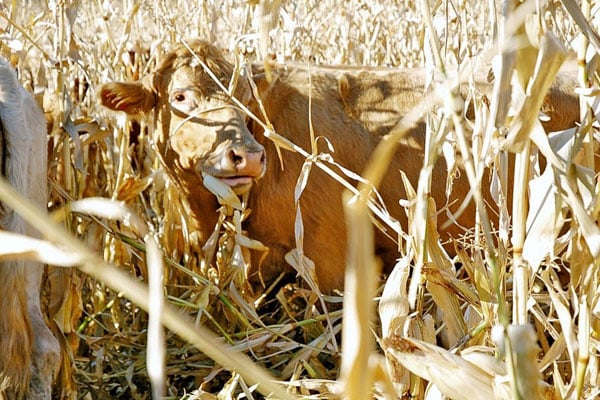Prime
How to make maize stover palatable to your animals

Maize stover is rich in vitamins a key nutrient for cattle. PHOTO/FILE
What you need to know:
- Two tonnes of harvested grains produce a tonne of stover.
- It is estimated that 900 million tonnes of maize stover is produced worldwide every year. Several techniques can be used to enhance the quality of stover.
For many small-scale farmers, agricultural crop residues constitute a crucial part of cattle, sheep and goats diet, particularly during the dry season.
Maize stover is one of the most abundant crop residues in Uganda. It is usually left behind after harvesting the grain.
However, the nutritive value of this important feed resource is limited due the presence of lignin.
Further, stover has variable dry matter content, yield and chemical composition depending on harvest time, harvesting technique, maize variety, climatic conditions and pre-feeding treatment methods.
To optimise on the nutritive value of stover, the farmer can apply a variety of technologies, one of them being the use of agricultural urea. Maize stover contains different parts in variable proportion.
These are stalks (40-60 per cent), leaves (20-30 per cent), cobs (15-20 per cent) and husks (10-15 per cent).
Harvested grains
Two tonnes of harvested grains produce a tonne of stover. It is estimated that 900 million tonnes of maize stover is produced worldwide every year. Several techniques can be used to enhance the quality of stover.
These include physical actions such as chopping and grinding; chemical methods such as the use of ammonia, sulphuric acid and sodium hydroxide and biological procedures like the use of fungi, bacteria and other micro-organisms. However, almost all these practices have shortcomings.
They include the toxic nature of some chemicals and the unavailability/unaffordability of others.
The practices affect the health of the operator and the environment too. Maize stover has better nutritional quality than other cereals such as straws. Its protein content stands at six to nine per cent compared to four per cent of rice, wheat and barley straw.
However, the crude protein level is low compared to dried cassava leaves, lucerne hay or commercial supplements such as cotton seed cake.
Stover is also low in calcium and Vitamin A. The latter is found in green plants which should also be added to a stover meal. Maize stover diet should not exceed 25 per cent in young animals as their stomachs are not fully developed to handle the high fibre content. Breaking down of the fibrous material in maize stover using urea has two stages.
The first reaction – ureolysis – involves breaking down of urea into ammonia by urease enzyme. The enzyme can be added into the stover/urea mixture from sources such as ground soya.
The ammonia breaks down the plant material in the second stage. These stages are affected by the amount of urea, moisture of the stover/urea mixture, treatment time and temperature of the mixture.
Urea content of three to four per cent concentration has optimal results while the moisture content should be around 30 per cent at temperatures of 30-60 degrees Celsius. Three weeks are adequate for the two reactions to take place.
Beside the chemical breakdown of the fibrous material, urea increases the protein content of stover in form of non-protein-nitrogen (NPN) to as much as 23 per cent.
NPN is used by micro-organisms in the rumen of animals such as cattle, sheep and goats to make protein. For better results, the stover should be reaped within 24 hours after grain harvesting to reduce quality losses through maturation, pest attack, tramping, erosion and degradation by weather conditions.
The materials should then be chopped to about five centimetres to enhance its ability to mix with the re-agent and make it easier to mix the final product with other supplementary feeds such as molasses, greens and protein sources that further improve quality and palatability.
Plastic sheet
Mix four kilogrammes of urea (the one used as a fertiliser) in 100 litres of water. Spread thinly the chopped material on a plastic sheet and sprinkle on it the urea solution. Make several layers of maize stover – (some 10-20 centimetres) are covered with the urea solution. The 100 litre solution can be used on 100kg of maize stover. Place the soaked stover in a pit or silage tubing.
Small amounts should be added each time and compacting done to reduce air spaces. Seal the bag or cover the pit to avoid loss of ammonia.
The layering and sprinkling can also take place directly in the pit or bag. The material should be kept in airtight storage for three weeks before being given to animals.
This is to facilitate the two-step reaction necessary for conversion of the fibrous materials to quality feed.
Nutrition
Stover is also low in calcium and Vitamin A. The latter is found in green plants which should also be added to a stover meal.




